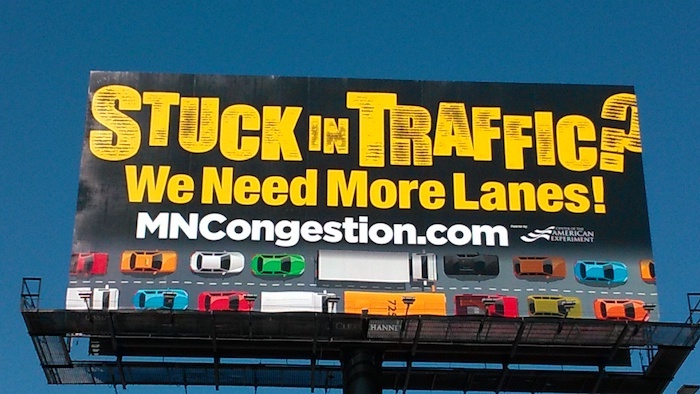Minnesota’s Roads Receive a Dismal D-Plus Rating
American Experiment has argued for a long time that Minnesota’s roadways are being neglected to the detriment of the vast majority of Minnesotans because policymakers have preferred to turn roads into bike lanes, build expensive light-rail lines, and add more buses to the roadways.
It turns out we’re not the only ones who think the roads are in rough shape.
The American Society of Civil Engineers recently released a study of Minnesota’s infrastructure and found gave the state a D-Plus rating for our roads. Reports like these have been conducted around the country for a number of years, but this was the first time it had been conducted in Minnesota.
According to an article in the Star-Tribune,
“Minnesota’s beleaguered road system received the lowest grade of all — a D-plus. Roads across the state are in poor condition, and congestion in the Twin Cities means motorists spend an average of 41 hours in rush-hour traffic every year, a slog that costs drivers $1,332 each in commuting expenses annually.”

Stuck in traffic? Probably.
The study called for more funding to enhance our infrastructure, which they said would be underfunded by about $18 billion over the next 20 years.
Despite the fanfare, mass transit has been losing ridership throughout the country. According to data from the Federal Transit Administration, ridership in March of 2018 was 5.9 percent lower than March of 2017 throughout the country.
According to an article by Randal O’Toole
Ridership declined in all of the nation’s 38 largest urban areas (and the 39th, Providence, gained only 0.1 percent new riders). Transit systems in Austin, Boston, Charlotte, Cleveland, Miami, Milwaukee, Philadelphia, San Diego, and Tampa-St. Petersburg all suffered double-digit declines, with Austin losing 19.5 percent and Charlotte 15.4 percent despite being two of the fastest growing urban areas in the nation.
Instead of pursuing building light rial lines that have seen declining ridership throughout the country, that state and cities of Minneapolis and Saint Paul should probably prioritize ways to accommodate the likely rise in ridesharing and autonomous vehicles that will be able to offer quick, and cost effective rides door-to-door, rather than comparatively longer rides to a transportation hub where people will still need to find ways to arrive at their final destination.